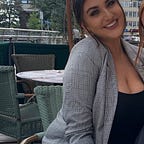Colour Psychology Blog
Ever wondered what it was that made you buy that brand of coffee? Overspend on trainers? Or crave that one chocolate bar in particular? Whether you know it or not, most brands use the clever tool of colour psychology to persuade their customers into buying their products.
What is Colour psychology?
Colour psychology is the study of how colours affect your behaviour, mood, and impression on others. Research shows that colours can greatly affect our moods and the way other people respond to us. Amazingly, colours can even change our heart rate, blood pressure, and respiration (bramm, 2021) and therefore it is arguably one of the most important things when marketing a product. People make up their minds within 90 seconds of their initial interactions with either people or products and about 62‐90% of the assessment is based on colours alone (Singh, 2006). So, what colours trigger what emotions?
Blue
Psychology dictates blue to be the most popular colour when it comes to logos. It stands for being ‘trustworthy, dependable, fiscally responsible and secure’ (Tsemashko, 2017). Brands such as Facebook, Oral B, HP and Dell all utilise the colour blue and therefore it highlights this sense of trust and security they provide to their consumers. Forbes also states that 35% of the world’s top brands use the colour blue in their logos (Badenhausen, 2014)which suggests these are the factors that consumers most look for when purchasing a product.
Yellow
The colour yellow represents optimism and has the benefit of being bright enough to attract a consumer’s attention from a distance as well as being the brightest colour in daylight. Companies like McDonald's and Ikea use yellow in their branding to imply to their consumers the happy and fun experience they will receive when choosing their brand over others.
Purple
Purple symbolises creativity, wisdom and imagination in marketing. An example of the creativity would be the famous purple brand ‘Cadburys’ with their always imaginative adverts, such as the 2007 drum playing Gorilla(https://www.youtube.com/watch?v=Dhg_rjpvtME). This advert was such a hit, that Campaign ranked it ‘the best TV ad in 50 years, making every creative green with envy’ (Arnold, 2018). By being so unconventional with their advertising, Cadbury’s lives up to their innovative nature.
Green
Green is the easiest colour for the eyes to process and is often used in stores to relax. The colour is associated with health, growth and of course money. Starbucks for example uses green in its logo to portray itself as an environmentally friendly brand (McCarthy, 2015). However, the green also implicates this idea surrounding money in western culture and compliments the fact Starbuck’s target audience is middle/upper-class consumers, and therefore you need to obtain a certain degree of wealth to shop there.
Red
Red is the colour that most stimulates the human body, affecting nerve impulses, raising blood pressure and heart rates. This is probably because red creates a sense of urgency, which is highlighted through logos such as A&E and Red Cross, as well as STOP signs. Brands that use red, like Coca-Cola and Virgin show this urgency through their high energy products, pulling focus away from other brands. This may be why Coca-Cola products are shown just before the checkout to increase these impulse buys from consumers.
After reviewing the biggest colours in branding, it is obvious how much time is spent looking at the colour psychology of each product. The factor of finding the right colour to compliment the brand and trigger the exact emotion brands want from potential consumers is a true skill.
Next time you go shopping, see what products you pick up. Have you chosen that product because you trust the brand? Does the product display creativity? Or simply are you in a rush and want something quick? See if your purchases match the mood you are feeling.
References
Arnold, R., 2018. Best Ad in 50 years: Made every creative green with envy. Campiagn, 07 12, p. 1.
Badenhausen, K., 2014. The World’s most valuable brands 2014: Behind the numbers. forbes, 05 11, p. 1.
bramm, H. V., 2021. Color Psychology. [Online]
Available at: https://www.colorpsychology.org/
[Accessed 10 3 2021].
McCarthy, J., 2015. Infographic: The power of colour in branding. The Drum, 17 07, p. 1.
McLeod, J., 2016. Colour Psychology Today. 2 ed. s.l.:John Hunt.
Singh, S., 2006. Impact of color on marketing. Emerald Insight, 44(6).
Tsemashko, I., 2017. THE PSYCHOLOGY OF COLOUR IN MARKETING AND BRANDING, Melitopol: Tavria State Agrotechnological University.
